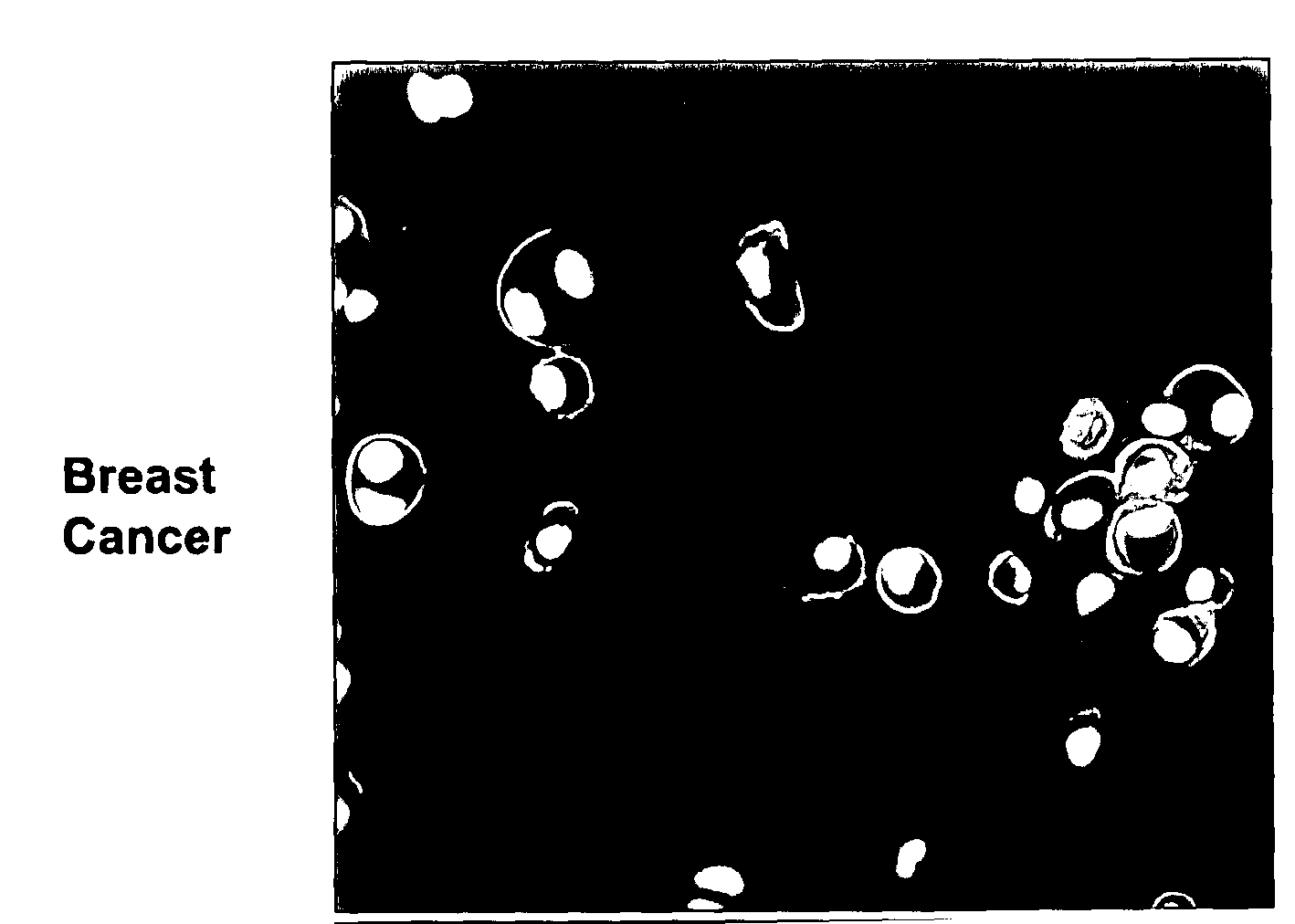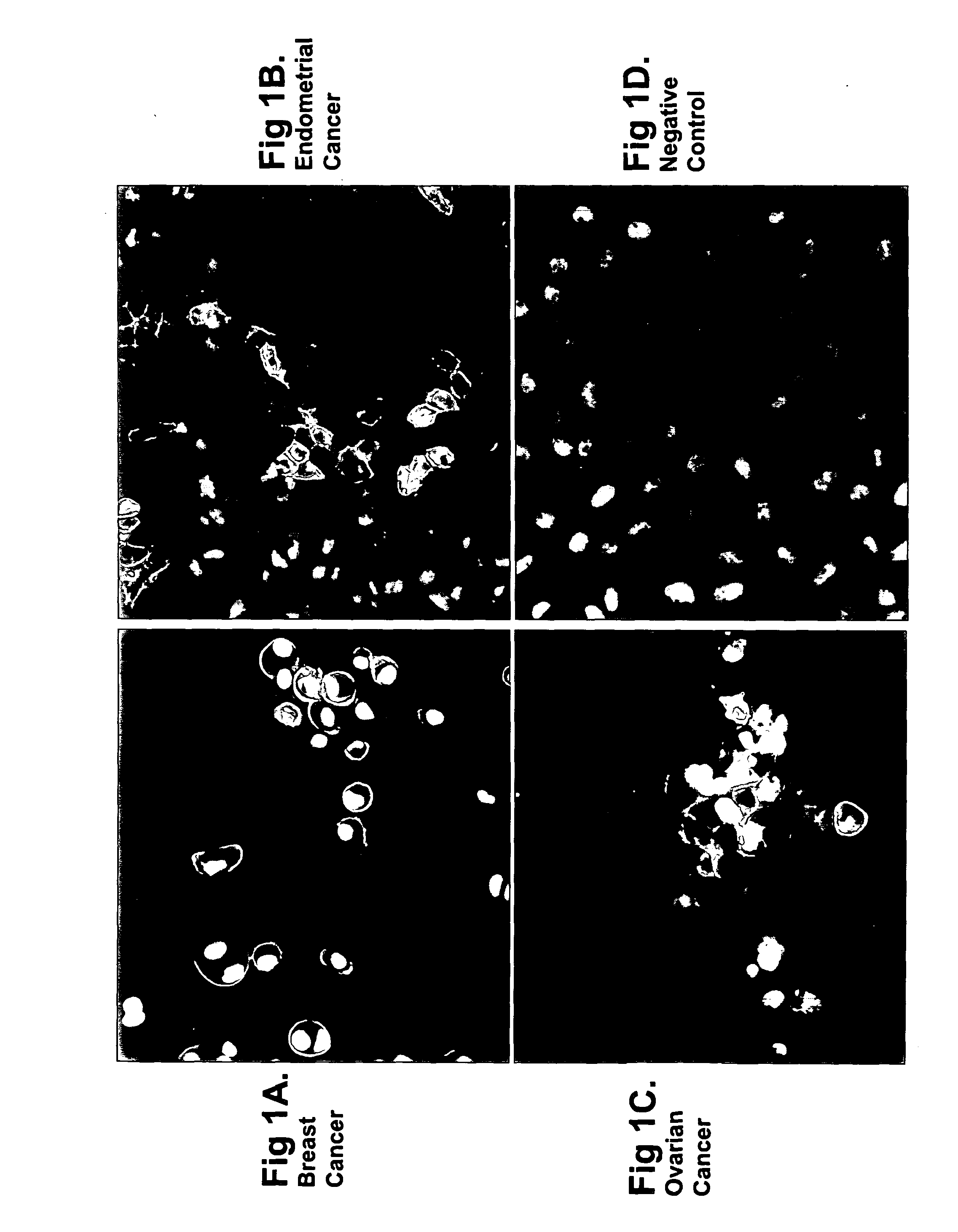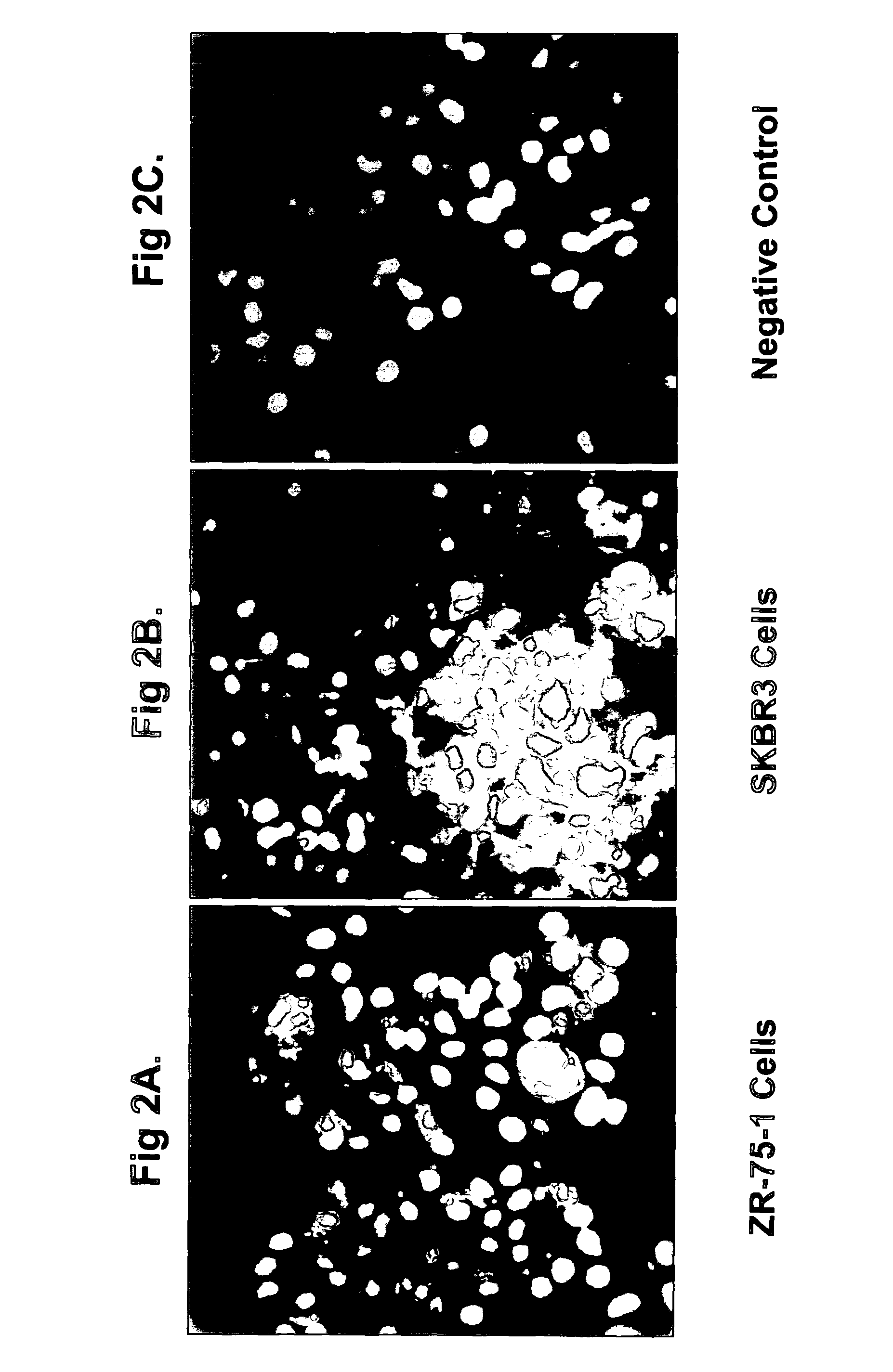OVR110 Antibody Compositions and Methods of Use
a technology of anti-ovr110 and composition, which is applied in the field of anti-ovr110 antibody composition, can solve the problems of increasing or reducing the risk of ovarian cancer, affecting the diagnostic ability of current screening procedures for ovarian cancer, and atypical women with ovarian cancer, and achieves the effect of reducing the suppressed immune function
- Summary
- Abstract
- Description
- Claims
- Application Information
AI Technical Summary
Benefits of technology
Problems solved by technology
Method used
Image
Examples
example 1
Production and Isolation of Monoclonal Antibody Producing Hybridomas
[0315]The following MAb / hybridomas of the present invention are described below: Ovr110.Q1, Ovr110.Q3, Ovr110.Q4, Ovr110.Q5, Ovr110.Q6, Ovr110.Q7, Ovr110. Q8, Ovr110.Q9, Ovr110.Q10, Ovr110.Q11, Ovr110.Q12, Ovr110.Q13, Ovr110.Q14, Ovr110.Q15, Ovr110.Q16, Ovr110.Q17, Ovr110.Q18, Ovr110.Q19, Ovr110.Q20, Ovr110.Q21, Ovr110.Q23, Ovr110.Q24, Ovr110.Q25, Ovr110.Q26, Ovr110.Q27. If the MAb has been cloned, it will get the nomenclature “X.1,” e.g., the first clone of Ovr110.Q3 will be referred to as Q3.1, the second clone of Q3 will be referred to as Q3.2, etc. For the purposes of this invention, a reference to Ovr110.Q3 or Q3 will include all clones, e.g., Q3.1, Q3.2, etc.
Immunogens and Antigens
[0316]For antibody production, screening and characterization various recombinant proteins, membrane preparations and transfected cells were prepared as described below.
[0317]For the Ovr110 constructs described below, nucleic acid mo...
example 2
Epitope Mapping of Ovr110 MAbs
[0371]The epitopes recognized by a panel of antibodies from the Q series were characterized by competition ELISA and by screening overlapping peptides for reactivity with the antibodies through an ELISA-based assay.
Competition ELISA
[0372]For the competition ELISA Q-series MAbs were evaluated alongside anti-Ovr110 MAbs A87.1 and C6.3 (described in PCT / US2004 / 014490 and PCT / US2005 / 040707, the disclosures of which are hereby expressly incorporated by reference) as positive controls and anti-ricin antibody TFTB1 (ATCC, Manassas, Va.) as a negative control.
[0373]Purified antibodies were biotinylated with Sulfo-NHS-LC-Biotin (Pierce, #21335). Recombinant Ovr110 was coated on plates as described in the Sandwich ELISA protocol above. Wells were filled with 50 uL unlabeled antibody (“blocking antibody”) at 20 ug / mL in TBST / BSA and incubated for 30 min. Fifty uL / well biotinylated antibody (“detecting antibody”) at 2 ug / mL was added and plates incubated for 15 min...
example 3
Cellular Binding of Ovr110 MAbs
[0379]To demonstrate utility as therapeutic agents anti-Ovr110 Q-series antibodies described above were evaluated for binding to Ovr110-expressing cancer cells, internalization by Ovr110-expressing cancer cells and killing of Ovr110-expressing cancer cells with a toxin conjugated secondary antibody. All cell lines in the example below were obtained from the American Type Culture Collection (ATCC; Manassas, Va.).
Surface Binding of Q-Series MAbs to Tumor Cells by Immunofluorescence
[0380]Anti-Ovr110 Q-series antibodies were evaluated for the ability to bind to the surface of various live tumor cells including ZR-75-1 cells (breast cancer), RL95.2 cells (endometrial cancer), OVCAR3 cells (ovarian cancer) and HeLa cells (cervical cancer). ZR-75-1, RL95.2 and OVCAR3 are positive for Ovr110 protein expression but HeLa is negative. These cell lines were seeded onto sterile 12 mm glass coverslips and cultured at 37° C. in DMEM / 10% FBS for 48 hr prior to treatme...
PUM
| Property | Measurement | Unit |
|---|---|---|
| Fraction | aaaaa | aaaaa |
| Fraction | aaaaa | aaaaa |
| Fraction | aaaaa | aaaaa |
Abstract
Description
Claims
Application Information
 Login to View More
Login to View More - R&D
- Intellectual Property
- Life Sciences
- Materials
- Tech Scout
- Unparalleled Data Quality
- Higher Quality Content
- 60% Fewer Hallucinations
Browse by: Latest US Patents, China's latest patents, Technical Efficacy Thesaurus, Application Domain, Technology Topic, Popular Technical Reports.
© 2025 PatSnap. All rights reserved.Legal|Privacy policy|Modern Slavery Act Transparency Statement|Sitemap|About US| Contact US: help@patsnap.com



